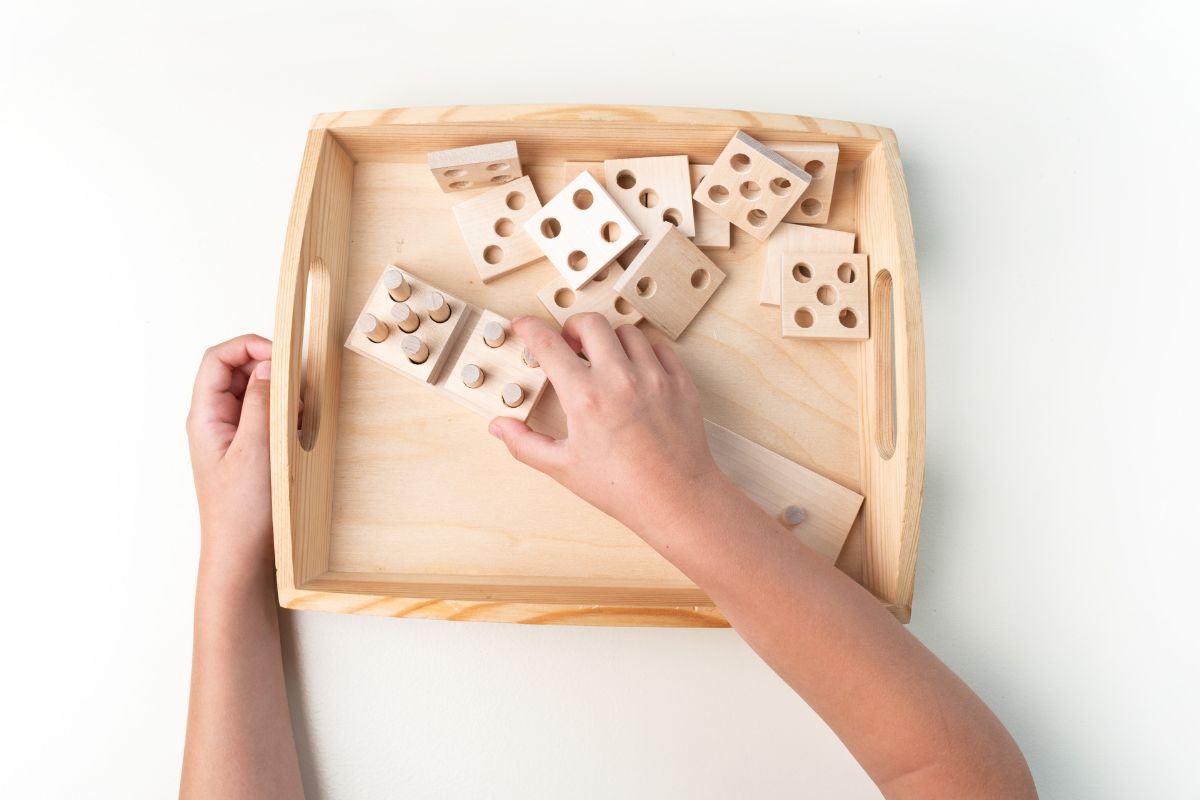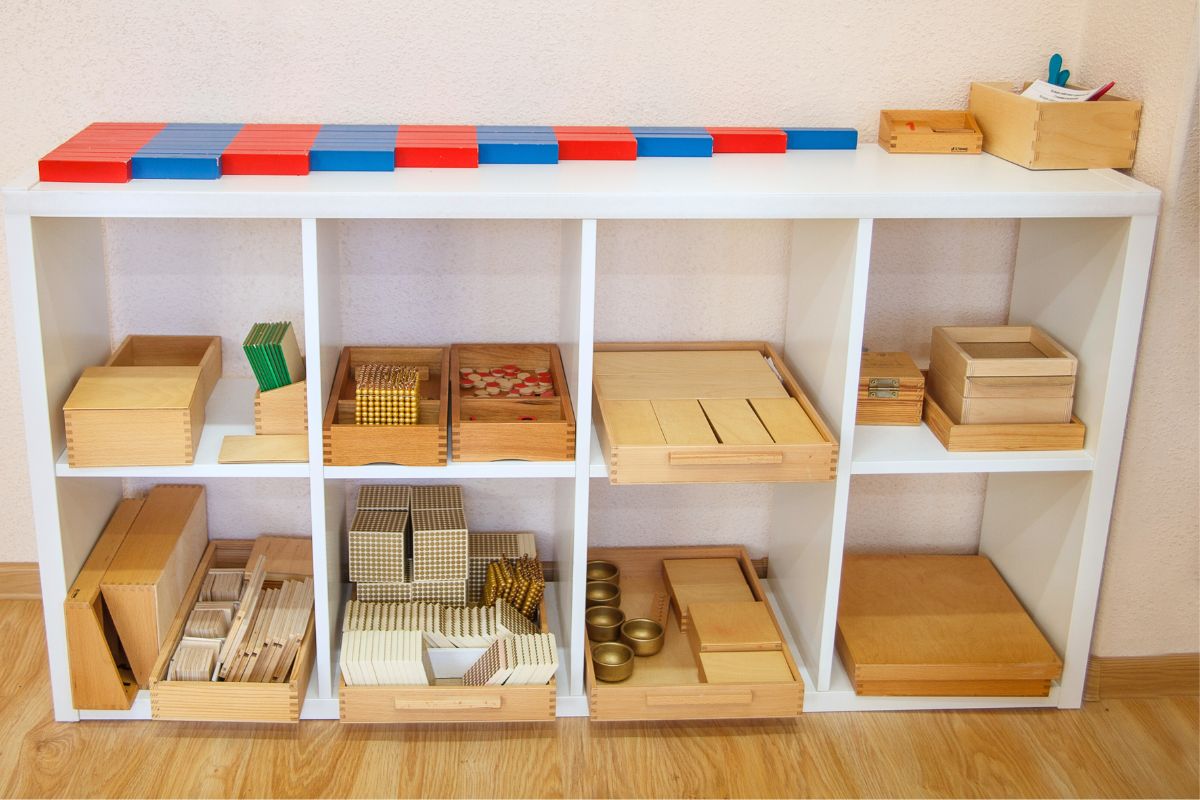The Montessori method of teaching is gaining popularity all around the world for its focus on self-directed learning and fostering independence among young learners. One key component of this effective pedagogical approach is the use of Montessori trays. These versatile tools play a significant role in organizing classroom activities, providing variety, and adding a touch of color to the learning environment. In this article, we take a deep dive into the world of Montessori trays and explore their various benefits and applications in early education.
The Essence of Montessori Trays
Montessori trays are more than just containers; they embody the Montessori prepared environment’s principles. This environment is carefully curated to foster child-led learning, allowing children to explore, discover, and learn at their own pace. The trays, whether a montessori wooden tray or a montessori sorting tray, are designed to promote independent interaction, ensuring that children have everything they need for a particular activity at their fingertips.
At first glance, Montessori trays might seem like simple containers that hold materials for learning activities. However, their true value lies in how they contribute to the overall structure and flow of a Montessori classroom. By carefully arranging each tray with specific purpose-driven materials, educators can create individualized workstations that foster focus, concentration, and self-reliance among their students.
-
Organization and Accessibility
One of the core principles of the Montessori method is maintaining an orderly, clean, and organized environment. Montessori trays and baskets serve as an extension of this principle by keeping learning materials neatly arranged and easily accessible for students. This allows children to independently choose and engage with the activities that interest them, without needing constant guidance or intervention from adults.
-
Variety and Choices
Each Montessori tray typically contains a unique set of materials tailored to a specific learning objective or skill. This gives students the opportunity to explore a wide range of activities at their own pace, encouraging them to make choices based on their personal interests and development levels. The possibilities with Montessori trays are endless. From montessori practical life trays that teach everyday skills to trays filled with montessori material for math, language or sensorial activities, the options are limitless. When curating a tray, consider the child’s interests, the skills you aim to develop, and ensure that the materials are age-appropriate and safe.
-
Aesthetics and Colors
Montessori trays are often designed with an eye for beauty, featuring vibrant colors and attractive materials that spark curiosity and help create a warm, inviting atmosphere in the classroom. This can have a positive impact on children’s overall learning experiences, making them more receptive to new concepts and ideas.
Types of Montessori Trays and Their Applications
Montessori trays come in various shapes, sizes, and materials, each with its unique advantages and applications. Some of the most common types include:
- Wooden trays – These durable, eco-friendly options are ideal for organizing natural materials like rocks, shells, or wooden blocks. They can also be used to hold art supplies or practical life materials such as sewing kits and kitchen utensils.
- Plastic trays – Lightweight and easy to clean, these trays are perfect for water-based activities or messy projects involving paint, glue, or clay. They often feature compartments or dividers to keep materials separate and organized.
- Metal trays – With a sleek, modern look, metal trays are a popular choice for magnetic activities or experiments involving magnets and other metal objects. They can also be used to display small items like coins, keys, or hardware.
- Fabric trays – Soft and flexible, fabric trays can be used to store delicate materials like feathers, fabrics, or yarn. They’re also suitable for tactile activities that involve sorting and matching different textures.
Setting Up and Maintaining Montessori Trays
To maximize the effectiveness of Montessori trays in your classroom, it’s essential to follow some best practices when setting up and maintaining these valuable learning tools.
-
Curating Purposeful Materials
When selecting materials to include in a Montessori tray, focus on items that encourage exploration, critical thinking, and problem-solving. Ideally, each tray should offer a self-contained activity that can be completed independently by the child.
-
Labeling for Independence
To support children’s autonomy, consider labeling each tray with a descriptive name, image, or color-coordinated system. This helps students know exactly what to expect from each activity and makes it easier for them to navigate the classroom and select their workstations without adult assistance.
-
Regular Rotation and Refresh
To keep students engaged and stimulated, rotate trays regularly and introduce new materials as needed. This ensures that children are consistently presented with fresh challenges and opportunities for growth and development.
Incorporating Montessori Trays Into Your Learning Environment
Incorporating Montessori trays into a child’s learning environment, whether at home or in a school setting, can pave the way for a holistic, enriching, and empowering educational experience. These practical tools can help create a dynamic and engaging learning environment that supports each child’s unique path of discovery and growth. As Dr. Maria Montessori once said, “The environment must be rich in motives which lend interest to activity and invite the child to conduct his own experiences.” Montessori trays, in all their simplicity and functionality, do just that.




